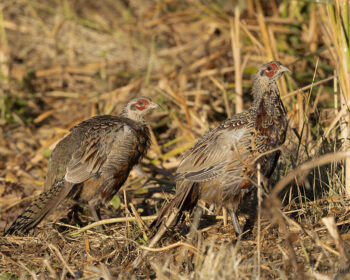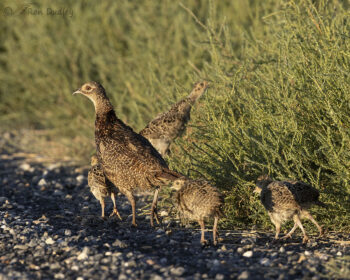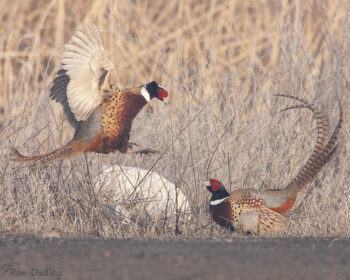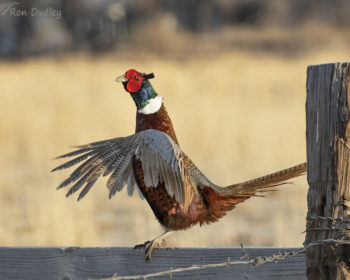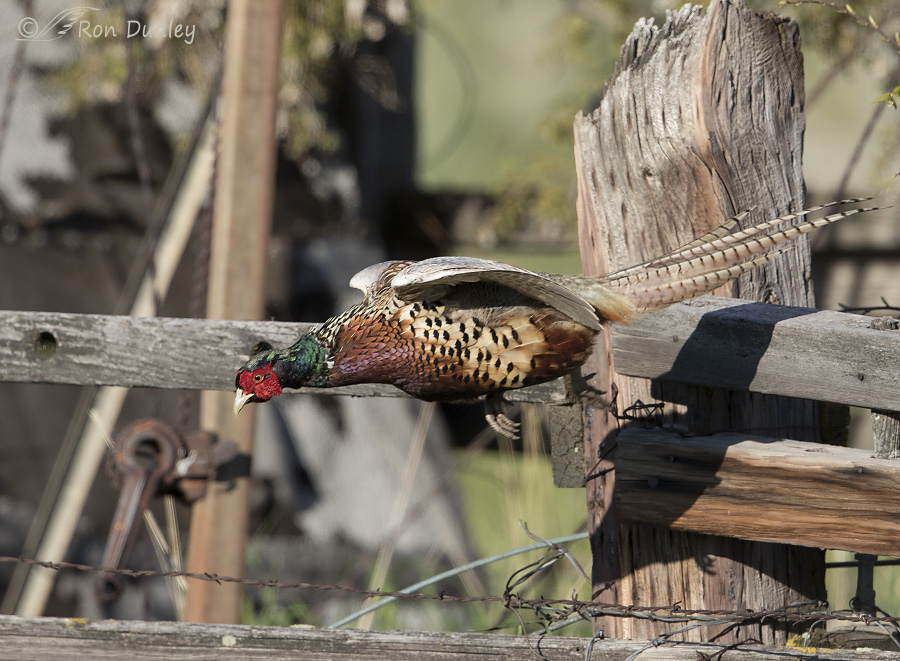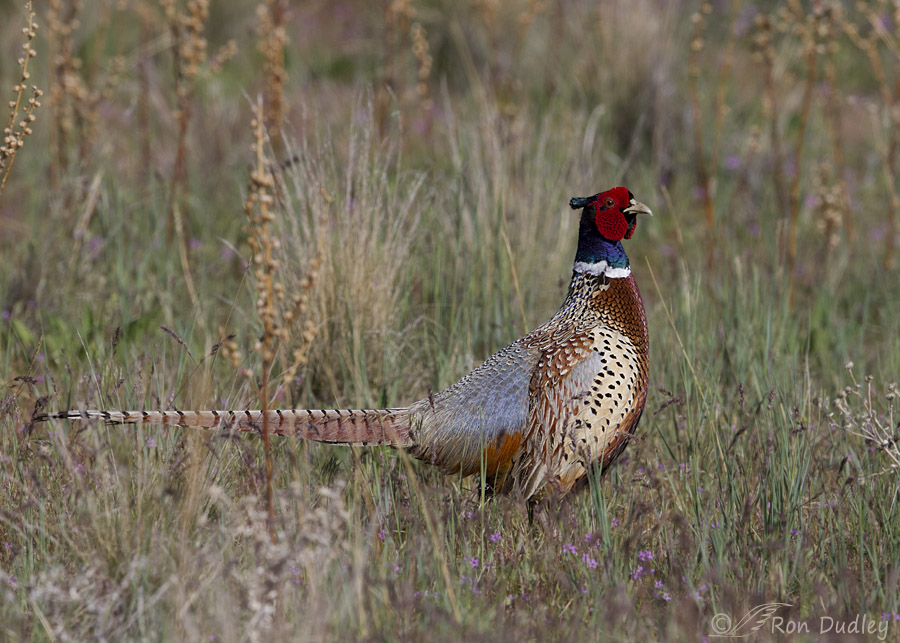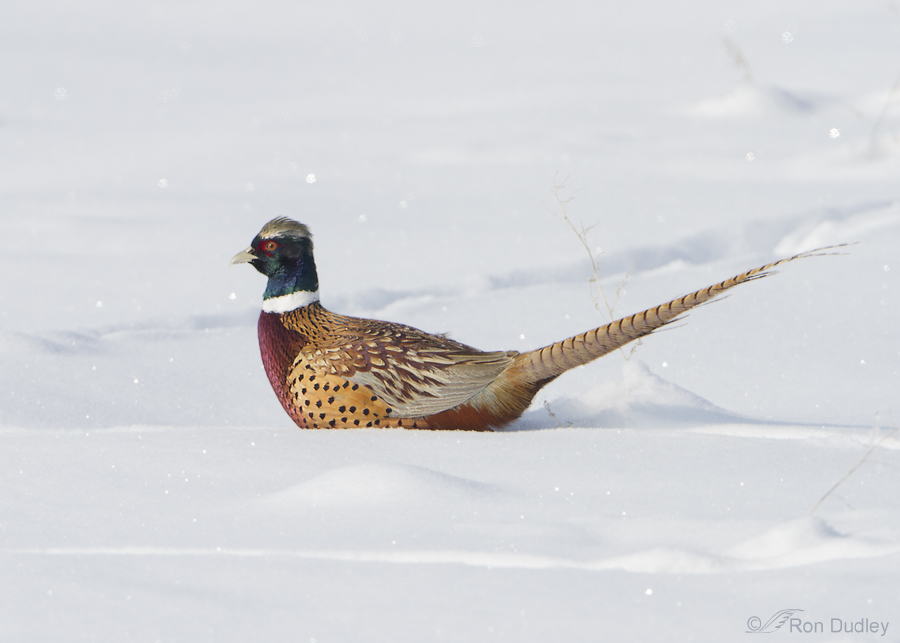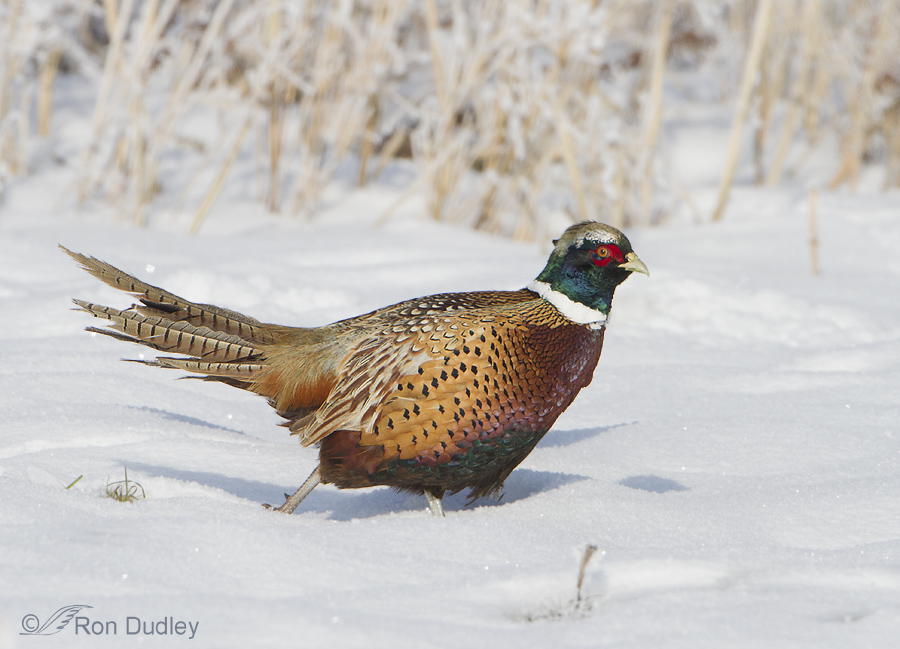Tag: phasianus colchicus
Baby Ring-necked Pheasants In Mid September
Fighting Male Ring-necked Pheasants
Male Ring-necked Pheasant Displaying In A Rustic Setting
Ring-necked Pheasant Coming Down Off A Fence
Ring-necked Pheasants – A Contrast In Seasons And In Demeanor
Pheasant With Long-Billed Hawk Syndrome
Yesterday morning at Farmington Bay I photographed this male Ring-necked Pheasant with a grotesquely deformed and overgrown mandible. These images show the problem clearly.
Some Very Odd-looking Pheasants
The Phantom Pheasant
Ring-necked Pheasants Struggling In Deep Snow
Native to Asia, the Ring-necked Pheasant is one of the most successful introduced bird species in North America. They are exceptionally prized by hunters and may be the most studied game bird in the world. In Utah, as in much of their adopted range, their numbers are declining due to modern farming technologies and practices which are responsible for degradation of their preferred habitat (small farms with diversified crops and many patches of idle habitat). Collisions with vehicles are a major cause of pheasant mortality. In a Nebraska study, 7,195 (known) pheasants were killed by vehicles in a 439 mile section of Interstate 80 in 7 years. (I once hit a beautiful male pheasant while driving a very large U-haul truck at 65 mph. It glanced off the windshield, which definitely got my attention, then wedged in the side-mirror, which it broke. I expected to be charged for the mirror but the U-haul folks were fly fishermen and were so delighted to get the tail feathers for tying flies that they let me off with no charge). During winters with heavy snowfall and severe cold these birds require dense winter cover such as cattails in wetlands, which is part of the reason they do well at Farmington Bay WMA where these photos were taken recently. Because of the snow and bright sunshine my camera techs were all over the map and pretty meaningless so I’m not including them this time. These heavy-bodied birds are somewhat reluctant to fly so deep powdery snow presents some problems for them. Typically they push their bodies through…
The Regal Ring-necked Pheasant
The Ring-necked Pheasant is a species I’ve always enjoyed (something I can’t say about many other introduced species). The colors of the males are spectacular and their mating antics in springtime are a lot of fun to watch and to attempt to photograph. Fighting males really go at each other. 1/640, f/9, ISO 400, 500 5/4, 1.4 tc, natural light One of the biggest problems with photographing them is composition – that ridiculously long tail is just so difficult to fit into the frame and still get a composition that works well if you’re close enough to get nice detail. The other issue is catching them in the clear – these birds prefer habitat that usually has lots of obstructing vegetation in front of the bird. But when you find one of them in the open and have nice light on the bird, their colors certainly catch the eye. 1/400, f/8, ISO 400, 500 5/4, 1.4 tc, natural light Males like to crow at the sun as it rises, which is exactly what this bird was doing. He’s sidelit and facing slightly away from me but this angle gave me light in the eye and I like the strutting pose. 1/800, f/8, ISO 500, 500 5/4, 1.4 tc, natural light Occasionally, especially on cold mornings, these pheasants will perch in trees in order to make best use of the warming rays of the sun. This is one of the few times I’ve photographed this species in a tree where there weren’t a lot of obstructing branches…
Just A Shot That I Like… #18 – Fighting Ring-necked Pheasants
In this neck of the woods Ring-necked Pheasants start feeling frisky about this time of year. Territories are being established, hormones flowing and feathers flying. When fighting, these birds flutter up against each other breast to breast, bite each other’s wattles and sometimes make high leaps toward each other using claws, bills and spurs. It can be quite dramatic. Just as the sun came over the mountains I pulled into a gravel hunter’s parking lot at the refuge and noticed these two birds going at it. I assumed they wouldn’t let me get close enough for quality photos but they were so intent on their battle that they mostly ignored me and I was able to get just close enough. 1/640, f/9, ISO 500, 500 f/4, 1.4 tc With the low light I was fighting for both shutter speed and depth of field and was pleasantly surprised to get both birds sharp at these settings. I’m always very happy to get behavioral shots like this, busy background or not. Ron
Just a Shot That I Like… #7 – Ring-necked Pheasant Roosting In Tree
Many folks think of Ring-necked Pheasants as strictly ground dwelling birds but that’s simply not the case. These pheasants regularly roost in trees at night and the following morning they will often be active in the roost tree for up to an hour before descending to the ground for the rest of the day. 1/800, f/8, ISO 800, 500 f/4, 1.4 tc Virtually every time I’ve seen these birds in trees it’s been on very cold, sunny mornings so I’ve always had the impression that they’re sunning themselves to warm up a bit. Usually they flush to the ground for cover before I can get close enough for quality photos but this cooperative male apparently decided that his chill was more of a threat to him than I was. He let me shoot away from close range for quite a while even though he was perhaps 20′ up in the tree and on a very exposed branch. Long-tailed birds like pheasants and magpies can present difficult compositional problems when cropping for presentation but I though this vertical crop worked out well with him on the diagonal perch. Ron


